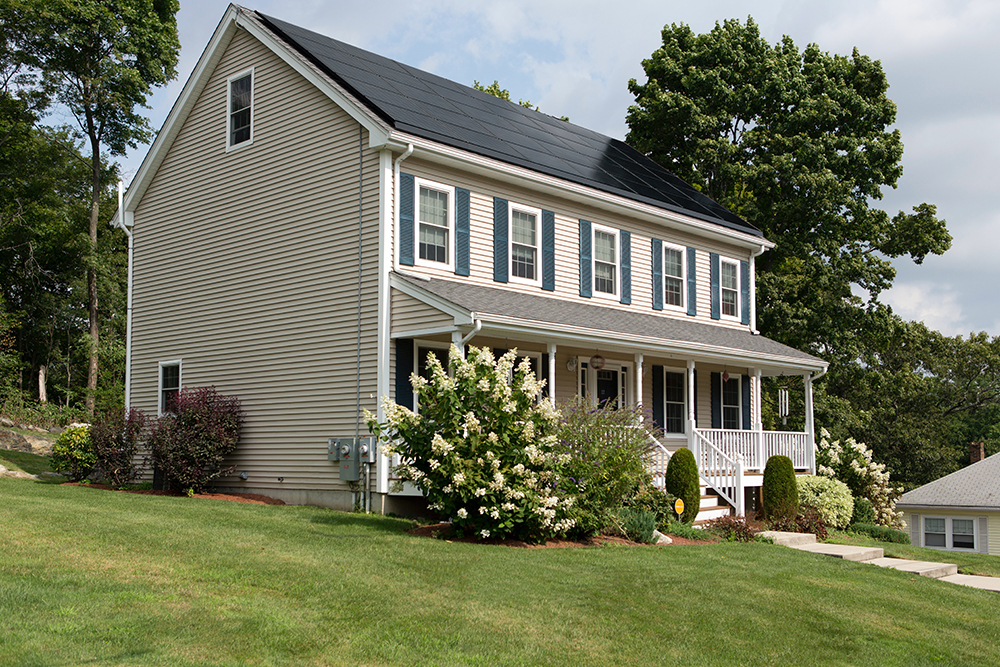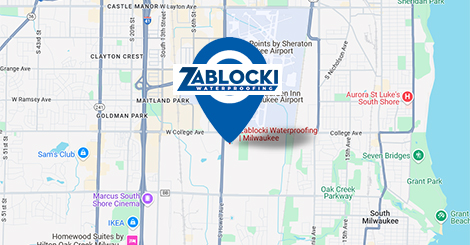 Gutters and downspouts are your home’s first lines of defense when it comes to keeping the foundation dry. When working correctly, gutters capture water off the roof of your home and move it away (preferably at least 6 ft downhill) from your home’s foundation via downspout pipes. Downspouts that don’t drain far enough away from the home can lead to a very wet basement.
Gutters and downspouts are your home’s first lines of defense when it comes to keeping the foundation dry. When working correctly, gutters capture water off the roof of your home and move it away (preferably at least 6 ft downhill) from your home’s foundation via downspout pipes. Downspouts that don’t drain far enough away from the home can lead to a very wet basement.
If you’re looking for DIY ways to improve drainage, consider extending your downspouts by installing buried drainpipe leading far away from your home’s foundation.
Extending downspouts by installing your own buried drainpipe is a relatively simple DIY project that requires a couple of days of work. You can expect to spend about $200 – $300 on materials for an average-sized downspout extension.
At Zablocki Waterproofing, we help homeowners in Milwaukee and across southeast Wisconsin keep their basements dry. Read on for our easy how-to guide for extending your home’s downspouts:
Step #1: Collect your tools and materials.
Before you start, collect all the necessary tools and materials:
Tools needed:
- Tape measure
- Shovel
- Level
- small sledgehammer
- Hacksaw or handsaw
Materials needed:
- 6-12 small, 1”x2” wooden stakes
- Several yards of string
- A shaker of flour or white spray paint
- Cardboard (enough to edge the entire trench)
- Non-perforated schedule 40 PVC pipe, 4-inch diameter (measured to length of project)
- Flexible drainpipe (as needed to extend around obstacles)
- Assorted PVC elbows and specialty fittings to connect all pieces of drainpipe
- 1 can PVC primer
- 1 can PVC cement
Step #2: Layout and mark the trench line.
Measure 4ft out from the drainpipe you are extending and place a wooden stake in the ground.
Then, mark the rest of your trench line by placing wooden stakes in the ground at 8ft intervals.
Tie string from one stake to the next, mimicking the line of the trench you plan to dig.
Next, use a shaker of flour or white spray paint to mark the trench line on the grass.
Finally, line the edge of the trench line with cardboard.
Step #3: Dig your trench.
Begin digging a 6” wide, 10” deep trench, dumping dirt onto the cardboard along the trench line (this will make it easier to backfill later). Use a level to ensure the trench has a slight downward slope to encourage water to drain away from the house.
If the soil is too hard to dig yourself with a normal shovel, you can rent a trenching machine or hire a backhoe operator to complete the job.
Step #4: Layout your pipe and appropriate fittings.
Before you connect anything, layout all pipe lengths you will need to complete the drainpipe as well as the appropriate PVC elbows and fittings. This will allow you to see if you have enough pipe to complete your downspout extension as well as the appropriate hardware to connect it all.
Step #5: Start connecting.
Begin connecting your drainpipe by fitting a 3×4” reducer coupling onto an adapter and pushing it on to the bottom of the existing downspout.
Next, place the 90-degree PVC elbow below the downspout adapter before measuring and cutting a length of pipe to connect the two. Attach one end of the length of pipe to the 90-degree PVC elbow by first swabbing the end with PVC primer then attaching with PVC cement, which will cure in just a few seconds. Then, insert the other end of the pipe onto the adapter connected to the existing downspout.
Step #6: Build out your trench.
Begin measuring and cutting lengths of pipe to connect along the entirety of your trench line, connecting ends with the appropriate fittings and sealing everything with PVC primer and cement. Circumvent obstacles such as large rocks or landscaping elements by using flexible PVC (with a 3×4” reducer coupling to connect it to the rigid PVC pipe) or special fittings.
Use a level at each step to ensure the drainpipe slopes away from the house.
Finally, at the end of your trench, dig a wide, shallow pit and fill with 4 inches of loose gravel or small rocks. Aim the end of the drainpipe so any water will drain over the rocks, then backfill the pit with dirt.
Step #7: Backfill your trench
Once you have finished installing the length of your drainpipe in the trench, use a garden hoe to push the dirt off the cardboard and back into the trench. Landscape as necessary.
At Zablocki Waterproofing, we help clients across the Milwaukee region with expert basement waterproofing, basement wall repair, and foundation repair services. Whether you are a DIY master or have never picked up a hammer in your life, don’t worry – we are here to help! Give us a call to get started today.





